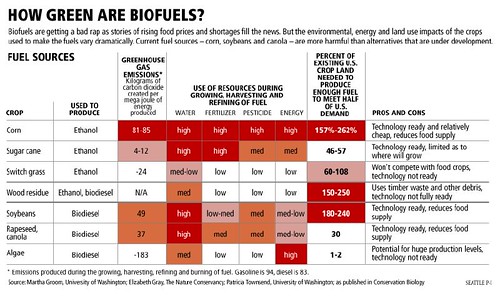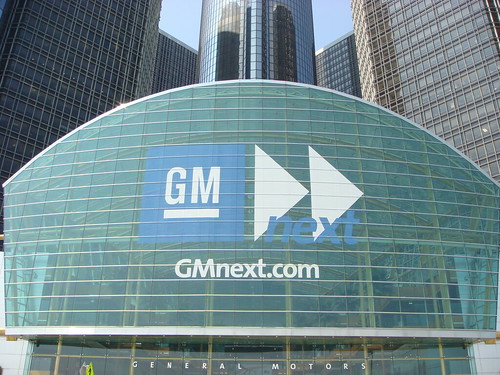
TRB News
2010 TRB 89th Annual Meeting and Transportation Research Record: Calls for Papers TRB standing committees have issued more than 40 calls for papers for the TRB 89th Annual Meeting, January 10-14, 2010, in Washington, D.C, and the Transportation Research Record: Journal of the Transportation Research Board (TRR). While papers addressing any relevant aspect of transportation research will be considered, some committees are soliciting papers in specific subject areas to help potential authors identify topics for their papers. Committees will be producing calls for papers through June, so authors should visit this site periodically. [More]
Fiscal Year 2010 Freight and Hazardous Materials Problem Statements Sought – Candidate Statements Due July 31, 2009 Candidate Statements Due July 31, 2009 TRB’s National Cooperative Freight Research Program (NCFRP) and Hazardous Materials Cooperative Research Program (HMCRP) have issued a request for problem statements identifying research needed for NCFRP’s and HMCRP’s FY 2010 programs. Research problem statements, which will form the basis for selection of the next round of research projects by the respective programs, are due by July 31, 2009. The NCFRP and HMCRP are applied, contract research programs with objectives of developing information that will be used to improve the efficiency, reliability, safety, and security of the nation’s freight transportation system. Anyone may submit a research problem statement and the process is easy. So, if you have any potential research topics, TRB would welcome your submission. New projects will be selected in the fall of 2009. [More]
Fiscal Year 2010 Transit Cooperative Research Program Legal Studies Topics Recommendations Due by July 1, 2009 The Transit Cooperative Research Program (TCRP) is soliciting ideas on candidate topics for the FY 2010 Legal Studies Program. The TCRP Legal Studies Program reports on legal issues associated with transit and intermodal law. Each document is intended to provide transit attorneys with authoritative, well-researched, specific information that is limited in scope. The studies focus on legal issues and problems having national significance to the transit industry. [More]
NCHRP FY 2010 Projects: Oversight Panel Nominee Solicitation Nominations Due May 29, 2009 TRB’s National Cooperative Highway Research Program (NCHRP) is soliciting nominees to serve on oversight panels for new projects being established under the NCHRP’s FY 2010 program. Nominees should have expertise directly relevant to the proposed project topic. To help identify nominees who are members of historically underrepresented groups, TRB encourages the nomination of women and members of minority groups. Panels for the new projects are scheduled to meet beginning in late July through September. Panel members are prohibited from submitting or participating in preparation of proposals on projects under their jurisdiction, and they serve without compensation but are paid travel and subsistence expenses. [More]
TRB Webinar: Animal-Vehicle Collisions May 12, 2009 TRB will conduct a web briefing or “Webinar” on Tuesday, May 12, 2009, from 2:00 p.m. to 3:30 p.m. EDT that will examine efforts to design and implement mitigation techniques to prevent animal-vehicle collisions. Participants must register at least 24 hours in advance of the start of the Webinar, space is limited, and there is a fee for non-TRB Sponsor employees. [More]
Truck Tolling-Understanding Industry Tradeoffs When Using or Avoiding Toll Facilities Proposals Due June 25, 2009 TRB’s National Cooperative Freight Research Program (NCFRP) and National Cooperative Highway Research Program (NCHRP) have issued a request for proposals to identify the value that goods movement businesses seek from the transportation roadway network and their willingness to pay tolls for that value. [More]
Recent Publications
Updated Test and Design Methods for Thermoplastic Drainage Pipe TRB’s National Cooperative Highway Research Program (NCHRP) Report 631: Updated Test and Design Methods for Thermoplastic Drainage Pipe explores a recommended load and resistance factor design (LRFD) specification for thermoplastic pipe used in culverts and drainage systems for highway structures. [More] [Buy it now]
Literature Review for Providing Access to Public Transportation Stations TRB’s Transit Cooperative Research Program (TCRP) Web-Only Document 44: Literature Review for Providing Access to Public Transportation Stations describes the results of the literature review associated with a project that is examining various alternatives for providing access to and from stations of new and mature high-capacity public transportation systems, including heavy rail, light rail, commuter rail, and bus rapid transit. [More]
Cooperative Research Programs Security Research Status Report TRB’s Cooperative Research Program produces a table summarizing more than 80 security and emergency preparedness projects representing over $11 million in the contract research programs for state departments of transportation and the public transportation industry. Updated monthly. [More]
Transportation Security: A Summary of Transportation Research Board Activities – A slideshow summary of the Transportation Research Board’s pre- and post-September 11, 2001, transportation security activities is updated monthly. [More]
Analysis and Recommendations for Developing Integrated Airport Information Systems – TRB’s Airport Cooperative Research Program (ACRP) Web-Only Document 1: Analysis and Recommendations for Developing Integrated Airport Information Systems is a summary of the efforts associated with the development of ACRP Report 13: Integrating Airport Information Systems .
Integrating Airport Information Systems TRB’s Airport Cooperative Research Program (ACRP) Report 13: Integrating Airport Information Systems is designed to help airport mangers and information technology professionals address issues associated with integrating airport information systems. A summary of the efforts associated with the development of ACRP Report 13 was published online as ACRP Web-Only Document 1: Analysis and Recommendations for Developing Integrated Airport Information Systems. [More] [Buy it now]












 The so-called peak oil debate has taken many twists and turns over the years. After long being an oddball survivalist preoccupation, the debate gathered mainstream momentum a few years ago as oil prices began a long ascent from around $30 per barrel to $147, where they topped out last summer. By the time a barrel of West Texas crude was rising eight bucks a day, scarcity seemed like the best and only explanation–that no matter how hard we tried, we couldn’t pump enough oil to meet demand. OPEC cut production, inventories rose, and it seemed like, in fact, we had plenty of oil for the foreseeable future and the whole thing had just been hedge fund shenanigans.
The so-called peak oil debate has taken many twists and turns over the years. After long being an oddball survivalist preoccupation, the debate gathered mainstream momentum a few years ago as oil prices began a long ascent from around $30 per barrel to $147, where they topped out last summer. By the time a barrel of West Texas crude was rising eight bucks a day, scarcity seemed like the best and only explanation–that no matter how hard we tried, we couldn’t pump enough oil to meet demand. OPEC cut production, inventories rose, and it seemed like, in fact, we had plenty of oil for the foreseeable future and the whole thing had just been hedge fund shenanigans.